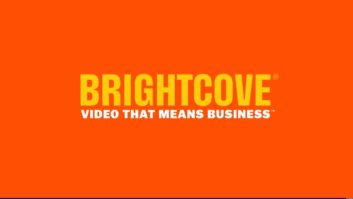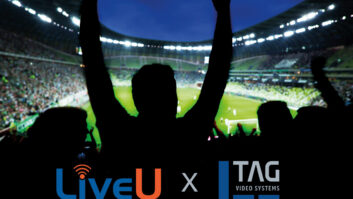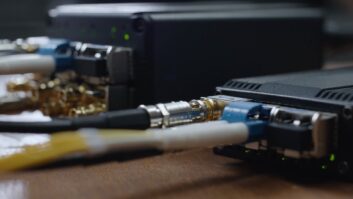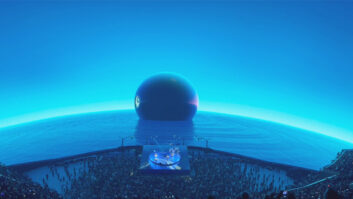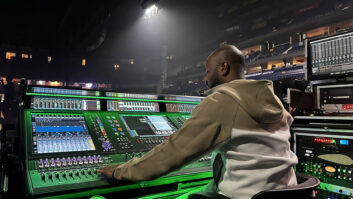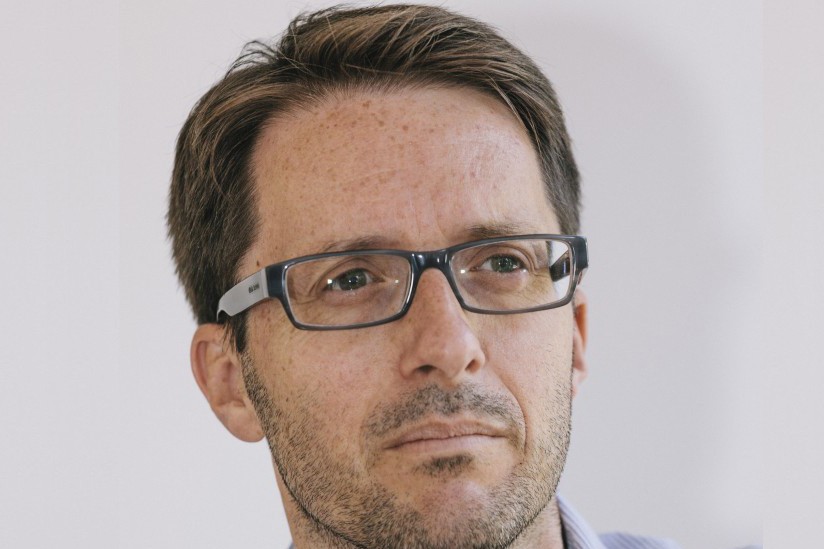
Rob Lane looks at the AV technology that’s lighting up both live events and fixed installations.
Live events are hot for AV. An increasing number of live performers and broadcasters are looking to AV magic to give their shows that something special, and some of the most innovative – and not necessarily expensive – solutions are giving more permanent installations a run for their money. But installers of fixed projects aren’t resting on their laurels either.
Installers on both sides of the fence are utilising state-of-the-art, disruptive tech; finding ways of leveraging proven technology to create new and exciting twists on previous solutions; and producing eye-boggling, low-cost effects that are so good as to appear to have been added in post-production.
Coldplay’s live shows are renowned for their high production values – budgets aren’t an issue when you’re one of the biggest bands in the world. For the band’s latest tour, a team of 16 took charge of a multitude of cameras, visuals, animation and LED displays – proven tech – enhancing results with a new video system specifically designed to fulfil an unsurprisingly ambitious brief.
Eight powerful Ai R6 media servers from lighting console and media server manufacturer Avolites formed the basis of this new system. These servers allowed the production crew to capture live while using incredible psychedelic graphic effects on almost all of the footage, apparently inspired by 90s rave culture – unsurprisingly given that many of the team started out as VJs at raves!
Mapping on to cello
Projection mapping might not be considered ‘disruptive’ – at least not these days – but it still has the power to wow and to innovate. In a world’s first, 59 Productions mapped Sol Gabetta’s cello during her debut performance of Elgar’s Cello Concerto. This was a challenging project: not only is this the smallest area the company has ever mapped, the cello’s surface is complicated to map out, not least since the artist wanted full movement of the instrument. To ensure that the projected image moved as the cello moved, small, discreet BlackTrax Beacons were subtly placed on the instrument, allowing its position to be calibrated and surface-mapped, and its movements tracked, with all data being sent to a media server.
More utilitarian and a lot less expensive, Holo-Gauze (from my client Holotronica) continues to feature as part of increasingly high profile events and performances. Its latest success was during the latest series of America’s Got Talent, where Hara, a Japanese magician, performed behind a 10m x 5m screen, with holographic visual effects projected to augment his performance. A case of AV magic helping to embellish traditional magic!
Another example of projection mapping pushing the envelope, the Farnborough airshow featured a 5m scale model of a passenger plane flying through constantly changing weather environments on the GKN Aerospace pavilion. Mounted against a 6m x 3m wall as a backdrop, both the wall and the model were projection-mapped to create the illusion of the plane flying through multiple weather conditions and environments.
Created using complex multi-layered projection-mapping techniques, the 3D graphics were overlaid on to the contours of the plane. Nine projectors and high pixel resolution covered the model with five separate content layers, allowing the audience to experience the mapped projections from all angles at very close quarters – the first time mapping has been used on a scale 3D model in such a way, for a live audience.
Throwing cubes
Finally, this year’s Adobe Summit EMEA, held at ExCeL, featured a meandering 136m interactive sculpture comprising 609 custom-made, individually controlled and pixel-mapped 400mm square LED cubes. Super-thin cables gave the impression that the cubes were floating in mid-air (‘magic’ again!), although they were actually secured on 78 metal frames. The cubes created an airborne ‘path’ to an interactive LED display, which used a camera to recognise audience body movements, allowing participants to throw virtual cubes ‘into the air’ as if they were joining the physical sculpture. An LED floor in front of the display created the impression of immersion with the sculpture.
Whether live or televised, permanent, semi-permanent or transient, events-based AV continues to break boundaries with innovative answers to some of the same old questions. Magical solutions from AV magicians.
